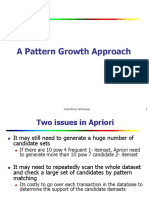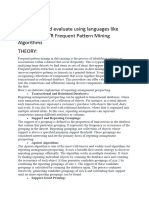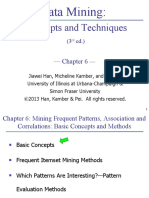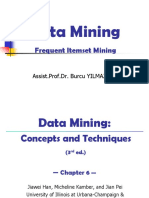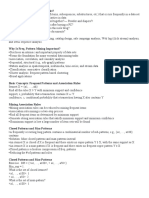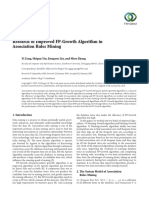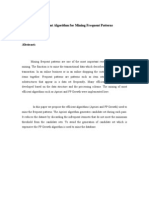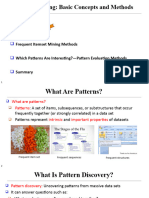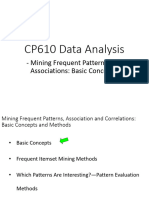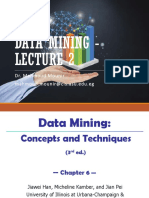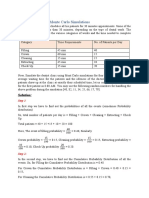0% found this document useful (0 votes)
5 views6 pagesMining Concepts Apriori Frequent Pattern
The document discusses various data mining techniques, focusing on Apriori, Frequent Pattern Mining, and Pattern Growth concepts. It outlines the steps and applications of the Apriori algorithm, frequent pattern mining methods, and the Pattern Growth approach, including the FP-Growth algorithm. Additionally, it covers frequent subgraph mining, the gSpan algorithm, and link mining, emphasizing their applications in fields like bioinformatics and social network analysis.
Uploaded by
tiyasachowdhury473Copyright
© © All Rights Reserved
We take content rights seriously. If you suspect this is your content, claim it here.
Available Formats
Download as PDF, TXT or read online on Scribd
0% found this document useful (0 votes)
5 views6 pagesMining Concepts Apriori Frequent Pattern
The document discusses various data mining techniques, focusing on Apriori, Frequent Pattern Mining, and Pattern Growth concepts. It outlines the steps and applications of the Apriori algorithm, frequent pattern mining methods, and the Pattern Growth approach, including the FP-Growth algorithm. Additionally, it covers frequent subgraph mining, the gSpan algorithm, and link mining, emphasizing their applications in fields like bioinformatics and social network analysis.
Uploaded by
tiyasachowdhury473Copyright
© © All Rights Reserved
We take content rights seriously. If you suspect this is your content, claim it here.
Available Formats
Download as PDF, TXT or read online on Scribd
/ 6






